The September 2019 fieldtrip focused on two locations in the western high desert in Nevada. The area is located about 60 miles south-east from Reno and hos some interesting minerals to collect. The best way to get there is to follow U.S. Route 395 north toward Reno to the Topaz Lake area near the California-Nevada border, then get on Nevada SR 208/339 all the way to Yerington. Alternatively, you can turn north on SR 339 in Bridgeport. The trip was approx. 432 miles, over-6-hours drive from Pasadena. Many members chose Yerington Inn for the basecamp, it felt clean and well maintained.
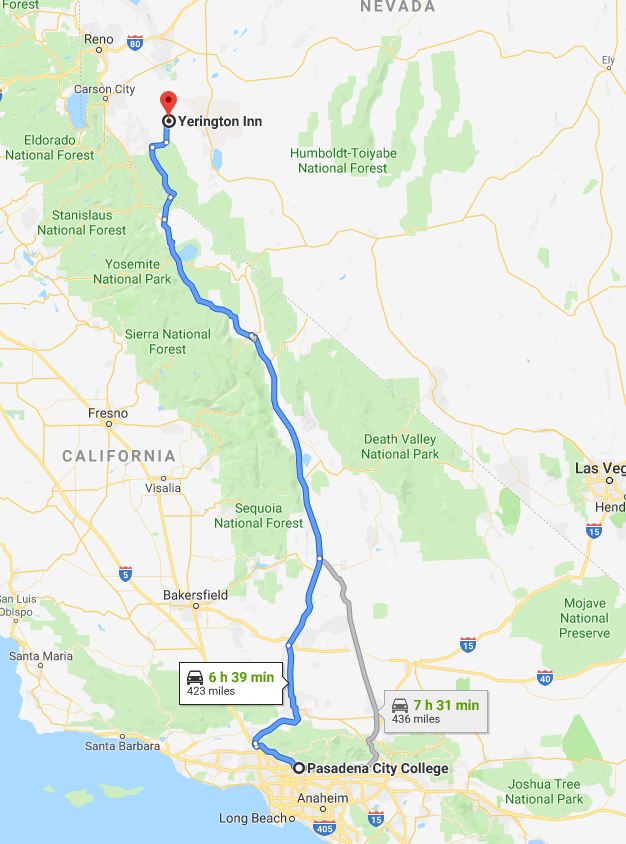
We met at 9:00 AM on Saturday, September 28th, 2019 at McDonald’s parking lot in Yerington, NV. We had 8 cars and 10 participants from MSSC and SCFM, a great number for a trip so far from Southern California.
We left promptly for the first stop of the day, the Blue Jay Mine, located 4 miles away at the top of the tall hill. GPS coordinates of the Blue Jay Mine:
38°58’57.9″N 119°05’21.5″W ( 38.982749, -119.089307 )
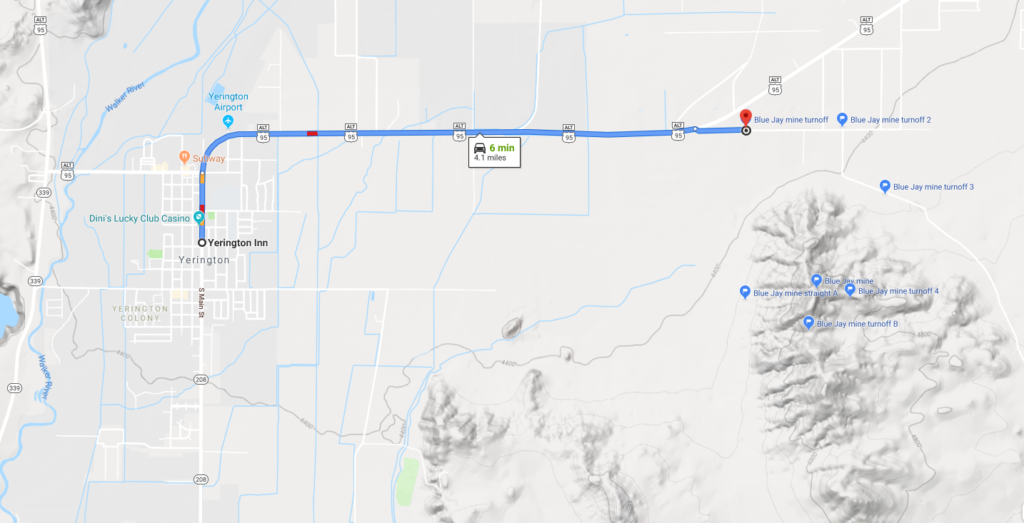
The weather in the morning was not too bad, there was no sign of the predicted cold front at that time. The wind was very strong, but not cold, the temperature was above 70F. Two cars stayed at the bottom of the hill due to the low clearance.
The mineralization at the mine is mostly copper phosphate minerals. Usually, in California, we only find microscopic copper phosphates. At the mine, we saw boulders covered with thick green phosphate layers. Here is the Mindat page of the location: https://www.mindat.org/loc-61154.html
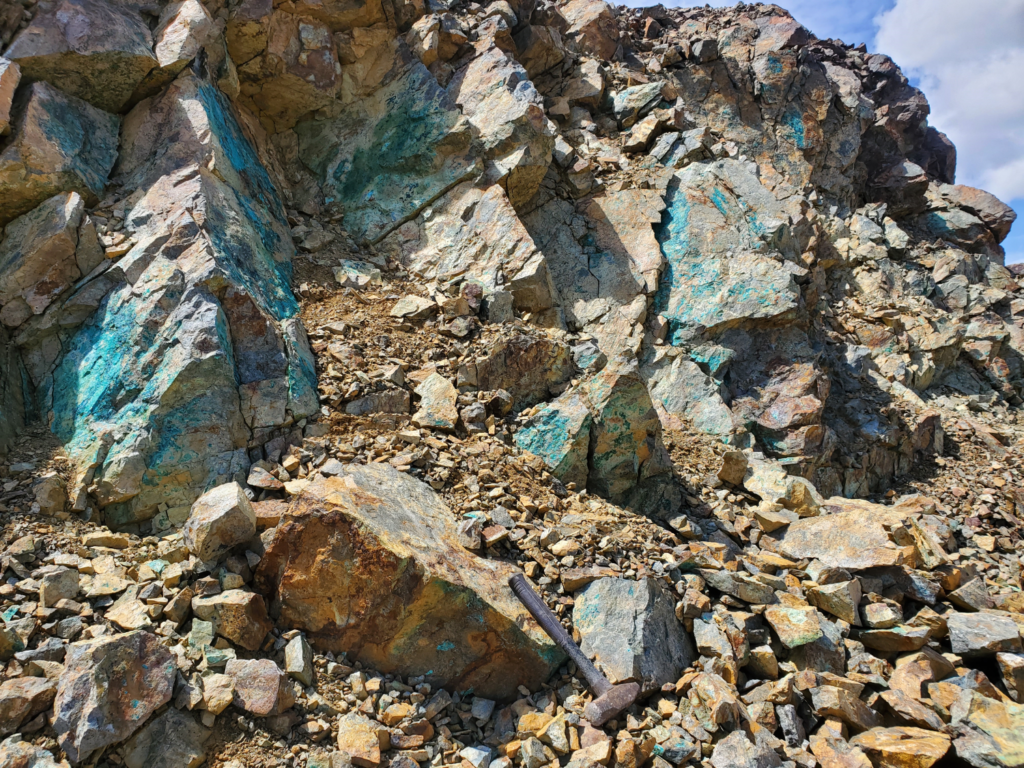
The most interesting minerals were dark green pseudomalachite, olive green libethenite, and dark blue cornetite. They are found in layers on the matrix or in separate crystal bunches up to a couple of centimeters.

Some of the cornetite shows sharp gemmy dark blue crystals up to 1-2mm, in my opinion matching the quality of crystals from the famous Star of the Congo Mine in Khatanga region of Africa.

Everybody got at least one specimen with a dark blue spot, while some participants took home 12-inch rocks with big spots of sparkly gem dark blue crystals of cornetite.

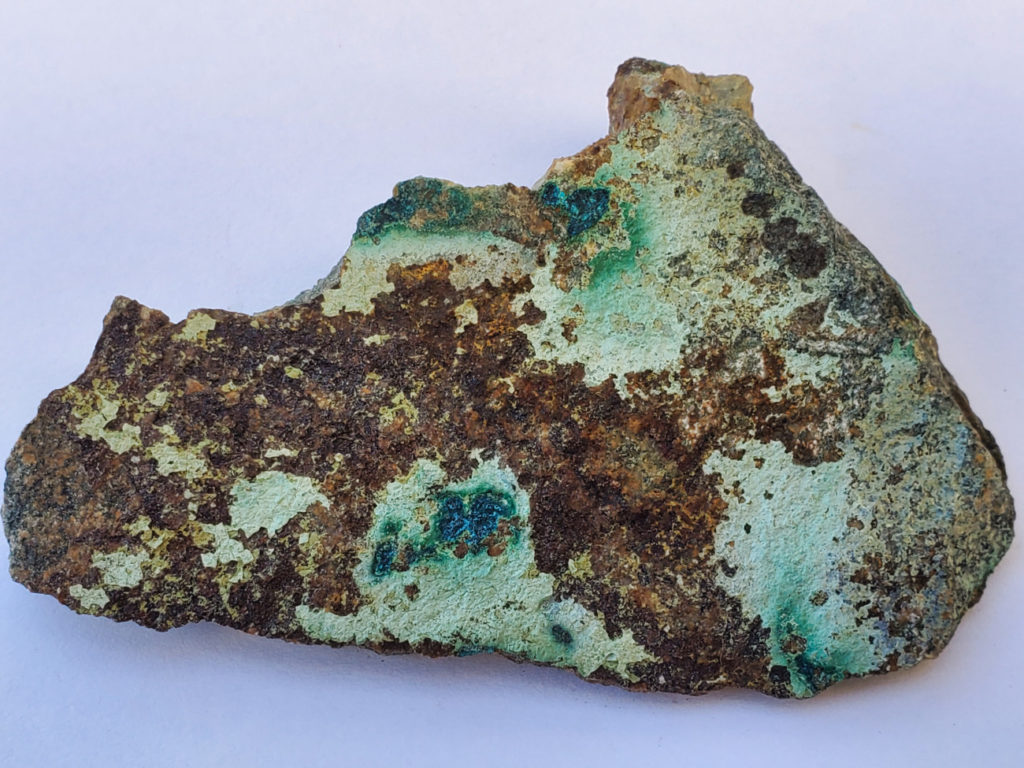
People spread around the mine and started breaking up rocks with visible copper color, finding dark green blobs of pseudomalachite and olive green libethenite.
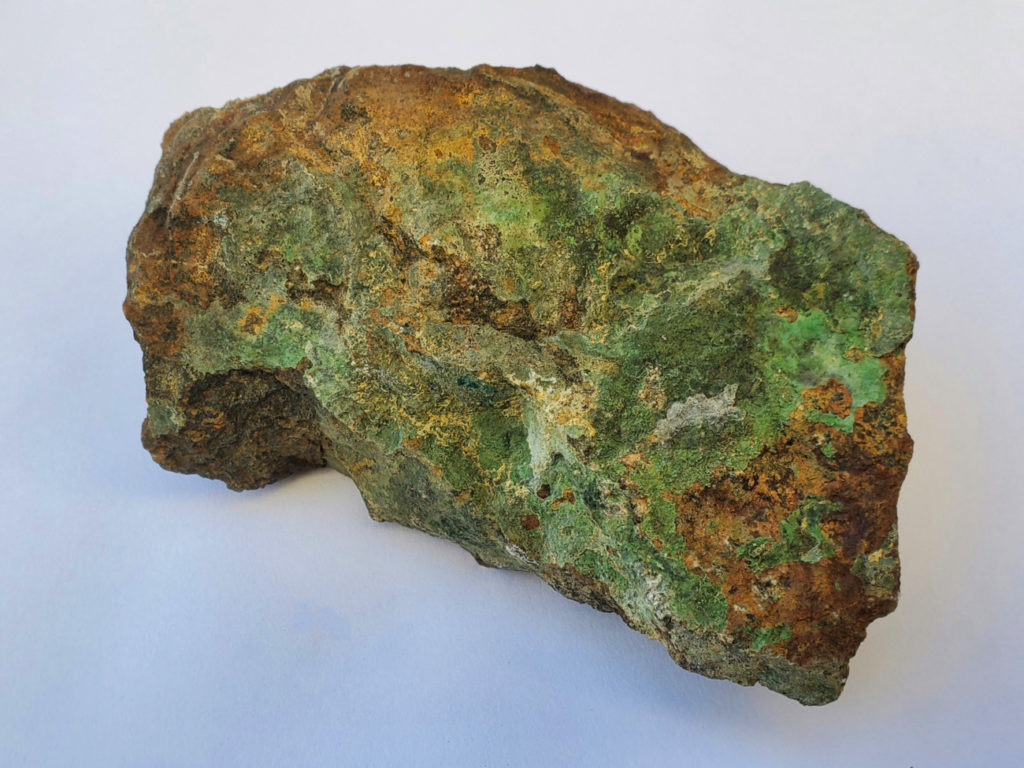
There was also a nice find of beautiful bright blue chrysocolla just down the trail from the mine.
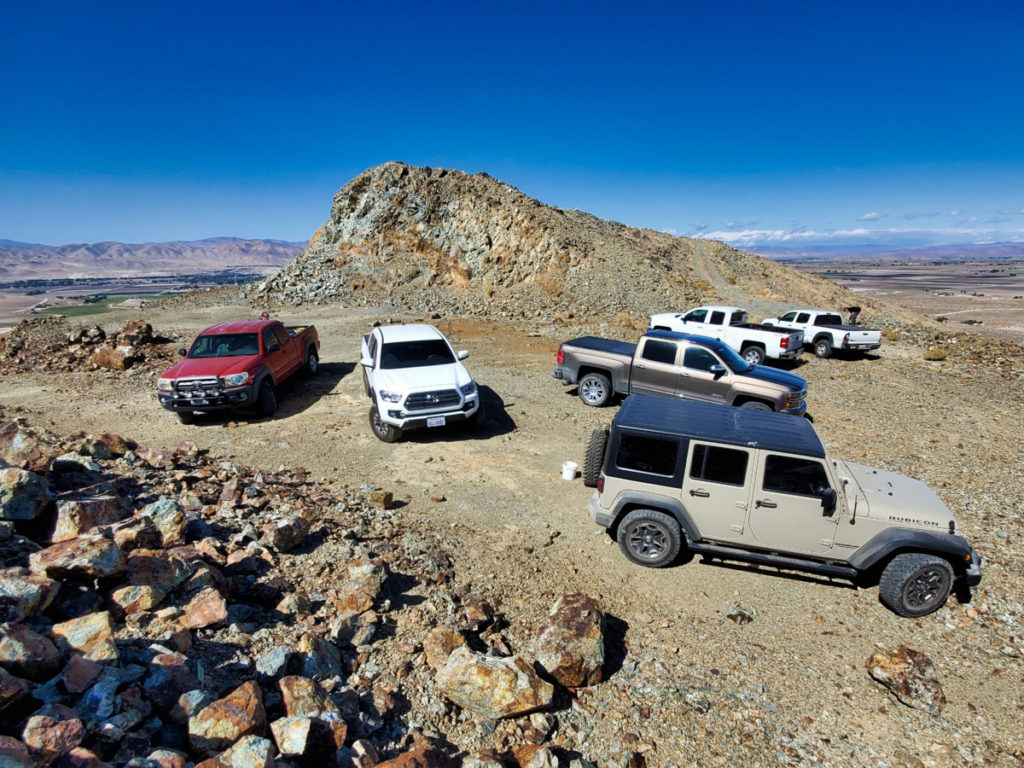
There is abundant material for the micromineral collectors as well. During the scouting and the main field trip, there were some minerals discovered not yet listed from the mine, like malachite and brochantite.
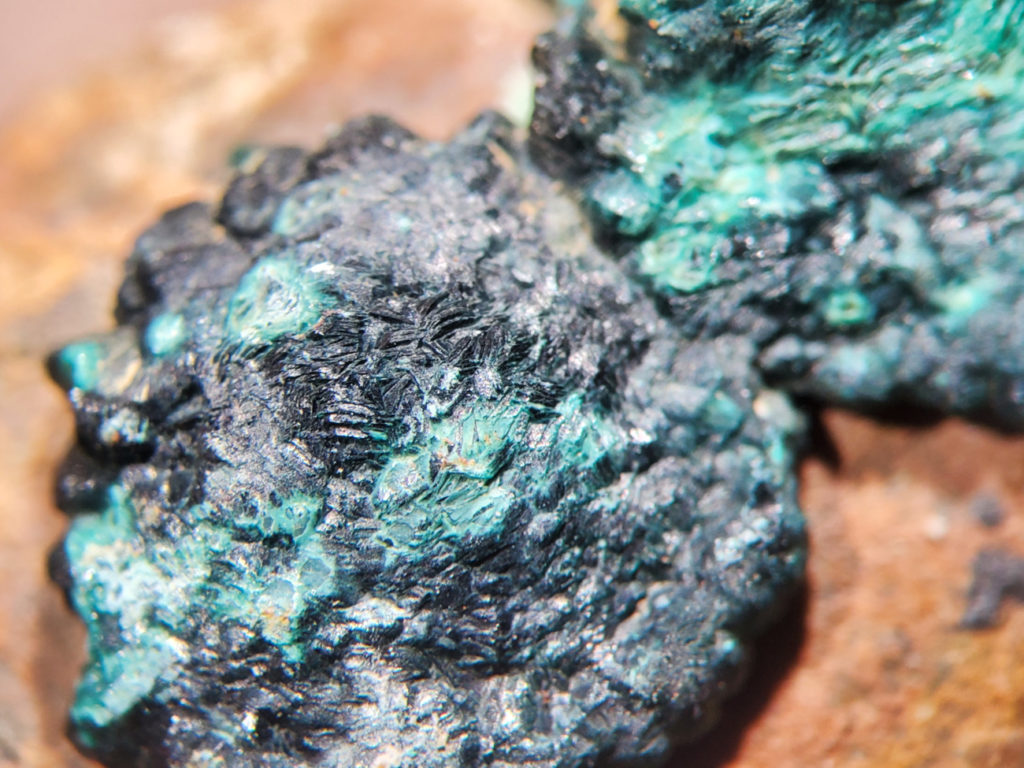
Another rare phosphate mineral that have been found to be new from this mine is the copper-iron phosphate chalcosiderite, a turquoise group member — seen as blocky pale green crystals up 50-100 μm in size.
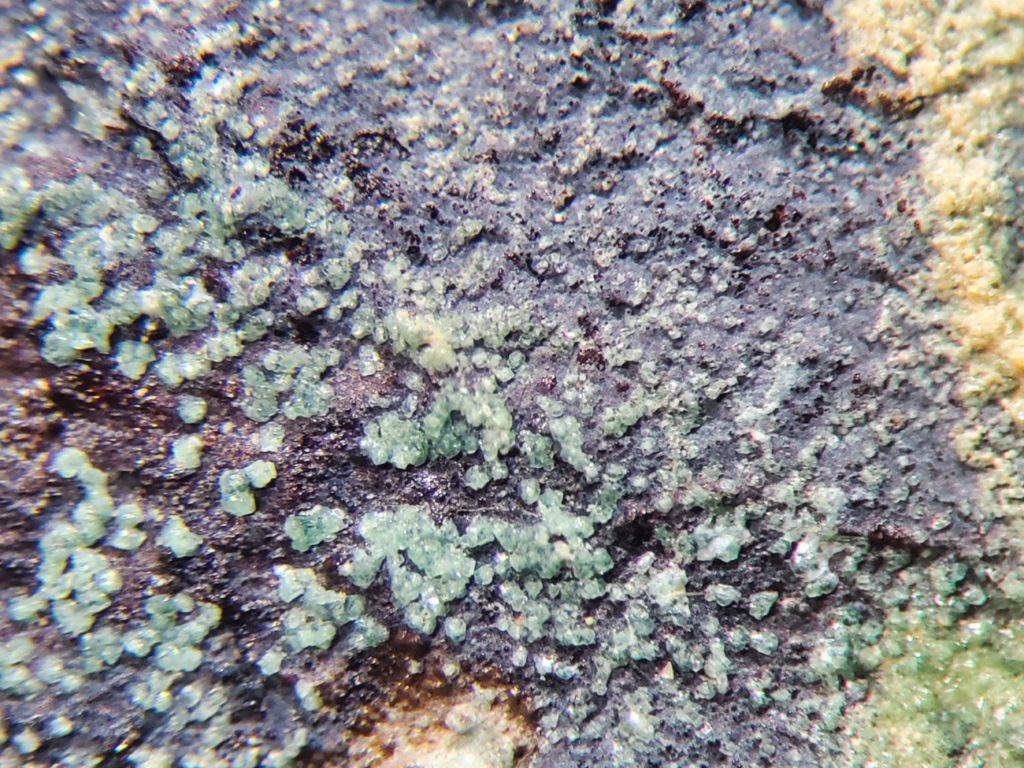
The biggest surprise and the rarest of them all, however, turned out to be a sodium calcium copper phosphate chloride, sampleite, the phosphate analog of lavendulan. It was found on only one small sample as very bright sky blue powdery spots, way too small to show any crystals even under the 200x magnification. It was verified using Raman spectroscopy and SEM-EDS analysis at Caltech Geoplanetary division (thanks, George and Bob!). It was also confirmed by the X-ray powder diffraction (PXRD) analysis by Tony Kampf at the L.A. Co. Museum of Natural History mineralogy lab. All this extra verification was needed because the available material was very minute, but also due to the fact that this is the first confirmed United States occurrence of sampleite, hereby officially reported. Previously it was reported in the Western hemisphere only from Mexico and Chile.
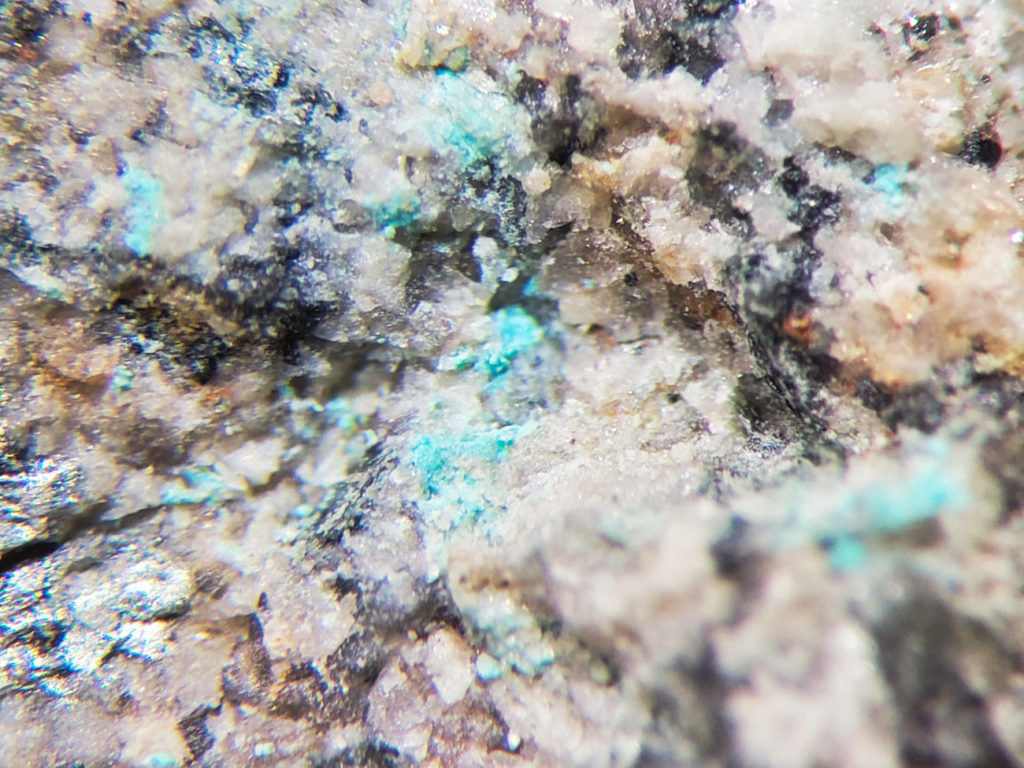
After 12 PM, we started heading down the mountain and stopped for lunch in Yerington. After lunch, we headed out towards Smith Valley for a half-hour drive south to our second location of the day, the Boulder Hill Mine near Wellington.
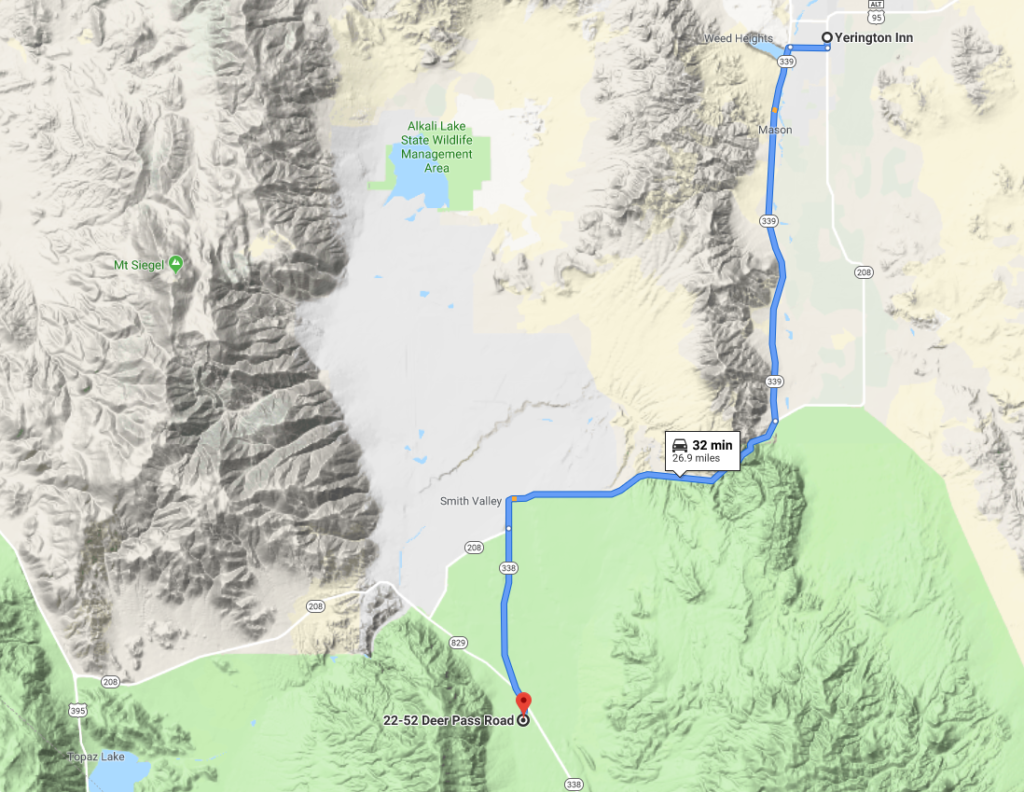
On the way, we passed through very scenic Wilson Canyon, which is also famous for the petrified wood specimens. A side note: on the way back I’ve found pink crystals of stilbite, a few mm in size, in the volcanic rocks near the west entrance to the river gorge. That locality is mentioned in the Minerals of Nevada book.
By around 2 PM, dark clouds and a cold wind started moving in and the temperature was dropping pretty fast. The cold front was arriving, but we escaped the cold rain, fortunately. We saw very dark rain clouds in the distance many miles to the north.
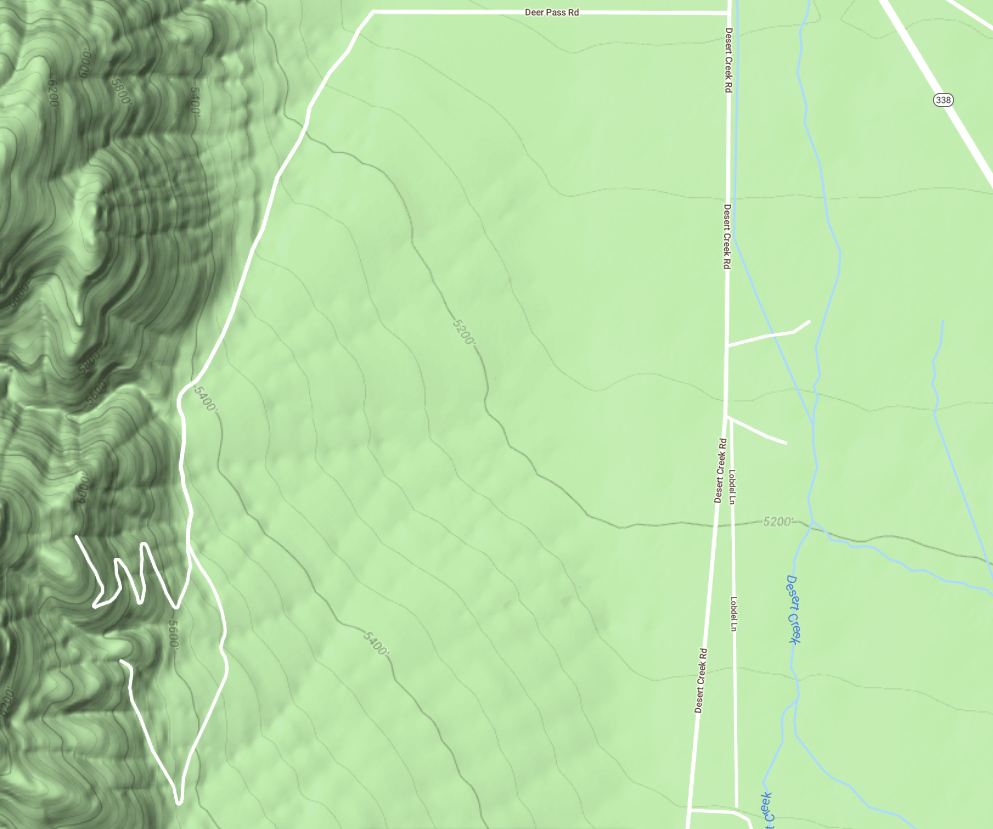
The Google Maps location of the mine top:
https://goo.gl/maps/fKZJRon1S62vm72p8
GPS coordinates: 38°41’49.8″N 119°20’41.7″W (38.697177, -119.344911)
The Google Maps location of the switchback bottom:
https://goo.gl/maps/QpAf9ntEVtrvCETVA
GPS coordinates: 38°41’38.8″N 119°20’26.4″W (38.694122, -119.340655)
On the way to the mine, we passed some barred old shafts and a miner’s house. There is no good material on those dumps.

The switchback road leads to the mine as seen on the map below, but is only passable using ATVs.
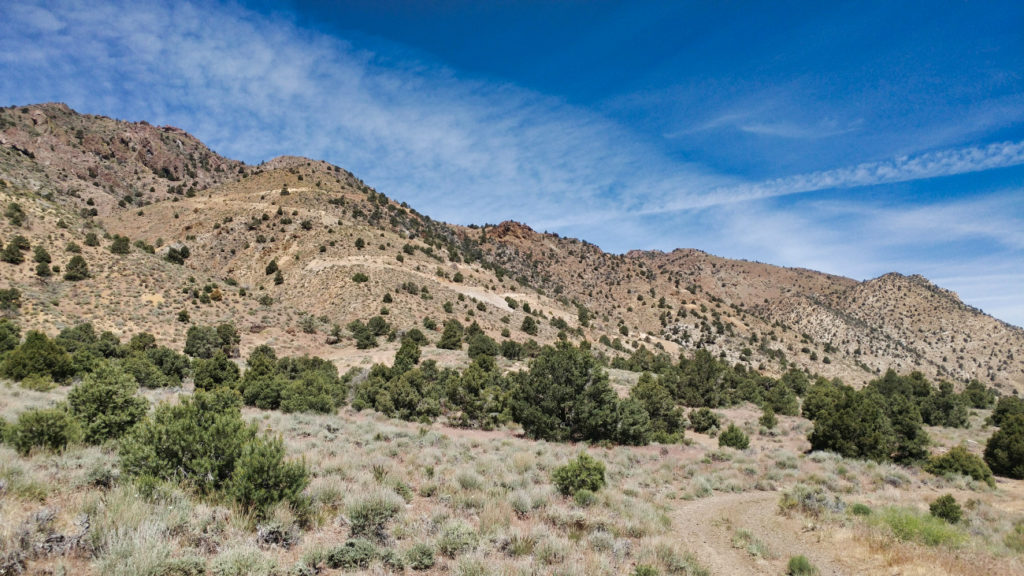
Some participants parked at the bottom of the switchbacks and walked up a few hundred feet altitude difference. They got to the mine faster than the group of cars going on 4WD trail around back to the top. There was a stalled car left on the trail, not from our group. We lost more than half-hour waiting for those clueless rockhounds to stumble back to their car and move it without even apologizing.
This mine is famous for the huge fluorite and barite crystals. The fluorite is mostly clear, milky, or lilac color. The cubes reach several centimeters in size. The luster ranges from really great to dull.
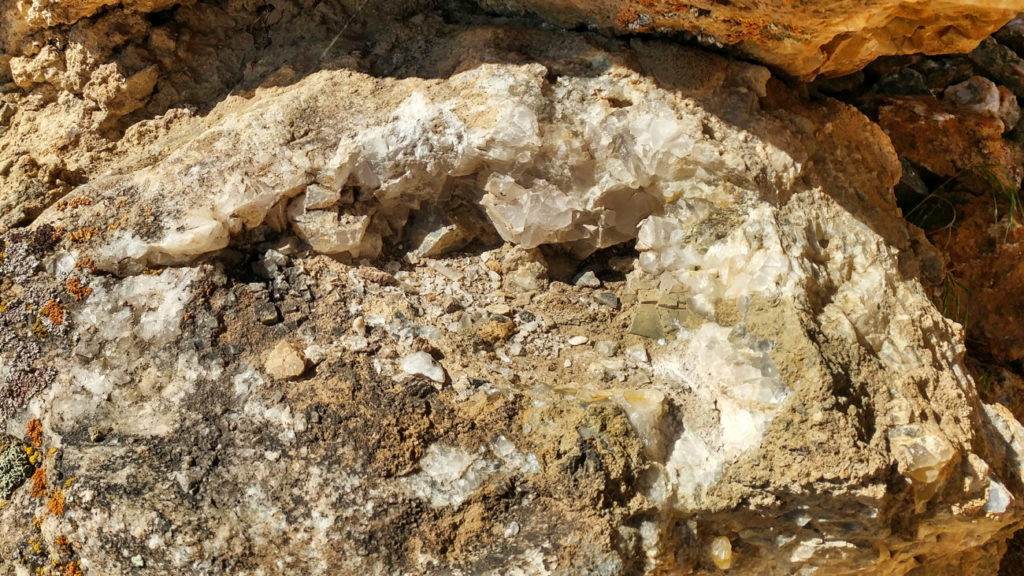
Some crystals are partially included with dark grey stibnite needles and blobs, resulting in phantom-like darker layers. Here is the Mindat page of the mine: https://www.mindat.org/loc-61095.html
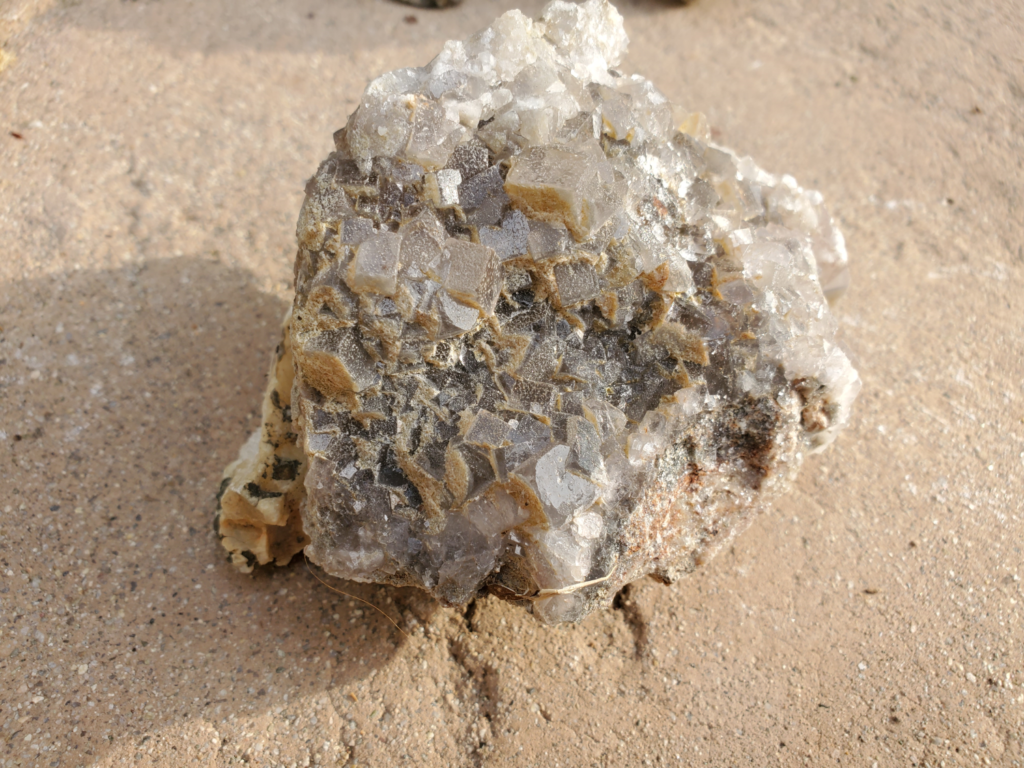

There were some nice barite crystals, but mostly found as the matrix for fluorite, showing color zoning from clear to milky. We did not find any bright red spots of realgar on the surface this time.
A couple of people found good material inside the short tunnel, the cubes were gemmy clear, not too big though — just below a centimeter.
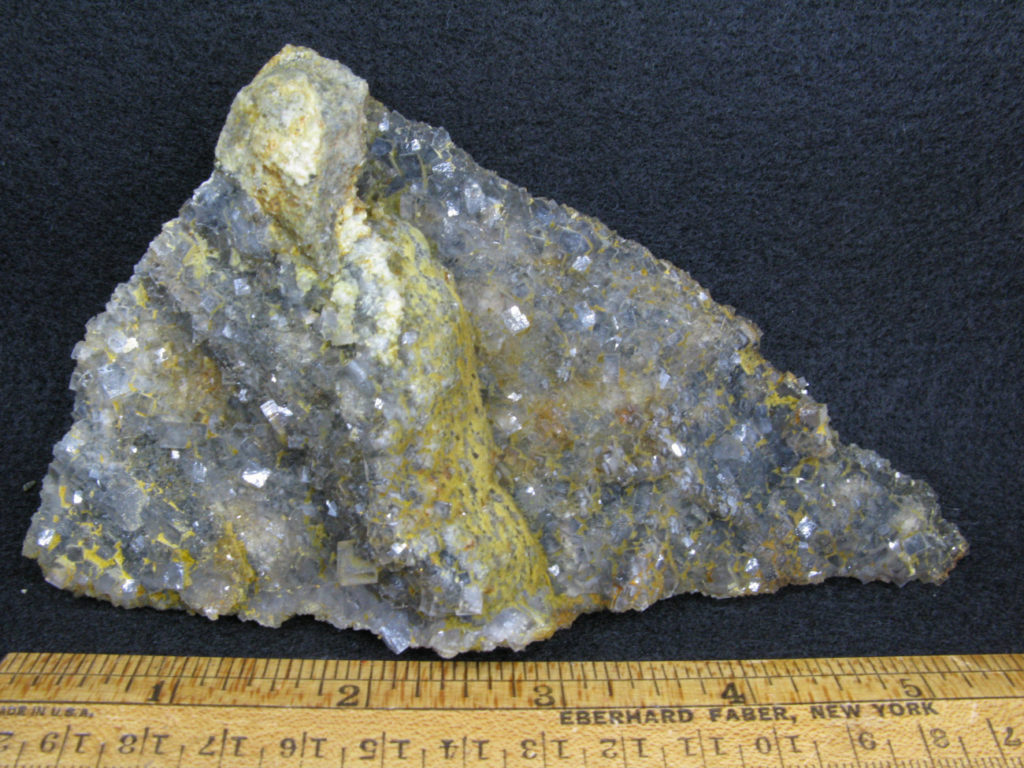
The small clear fluorite crystals in vugs are stunning under the microscope. Many of the crystals have trapezohedral corner modifications [211], some small, some quite prominent. I’ve also observed tetrahexahedral edge modifications [210] on a couple of crystals. Crystals bigger than 0.5 cm did not exhibit this morphology.
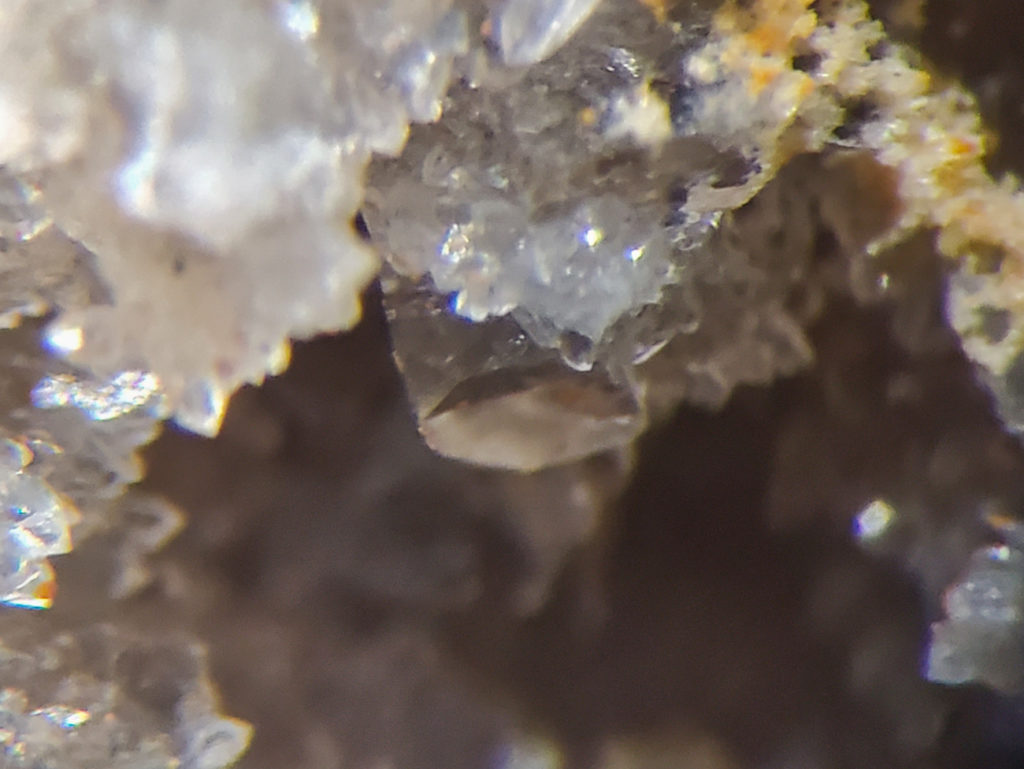
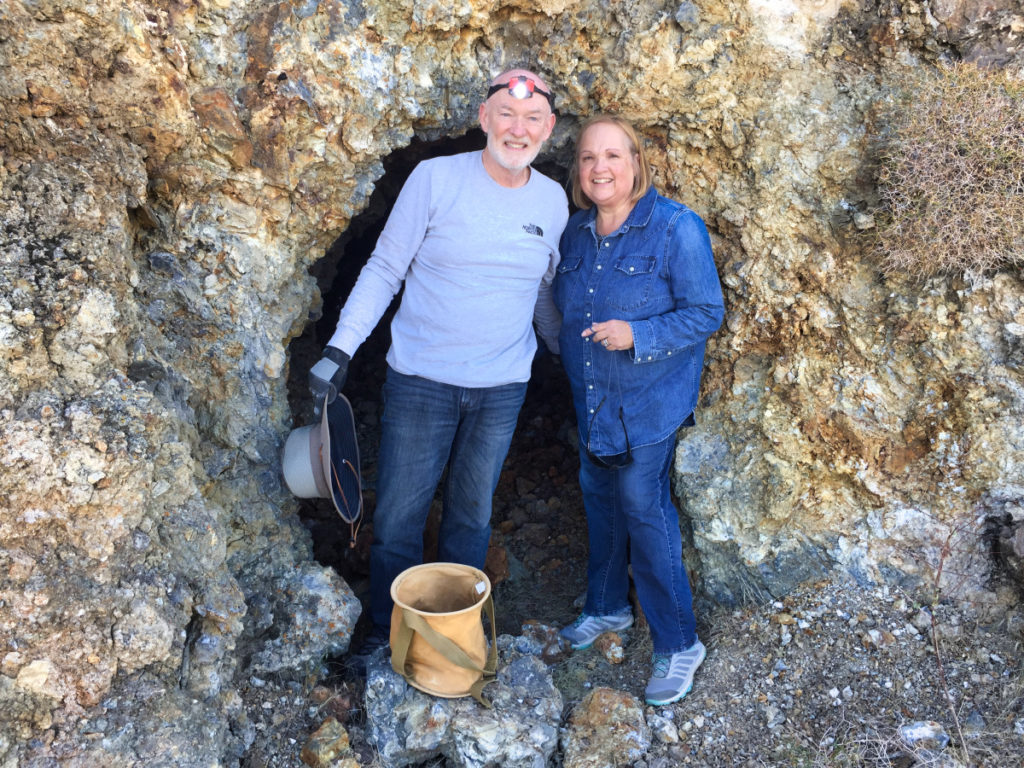
We tried to break up big and heavy boulders with bigger tools. The boulders tended to break right through the prettiest 5 cm fluorite cubes, unfortunately, but there was enough good material for everybody and for many more future trips.
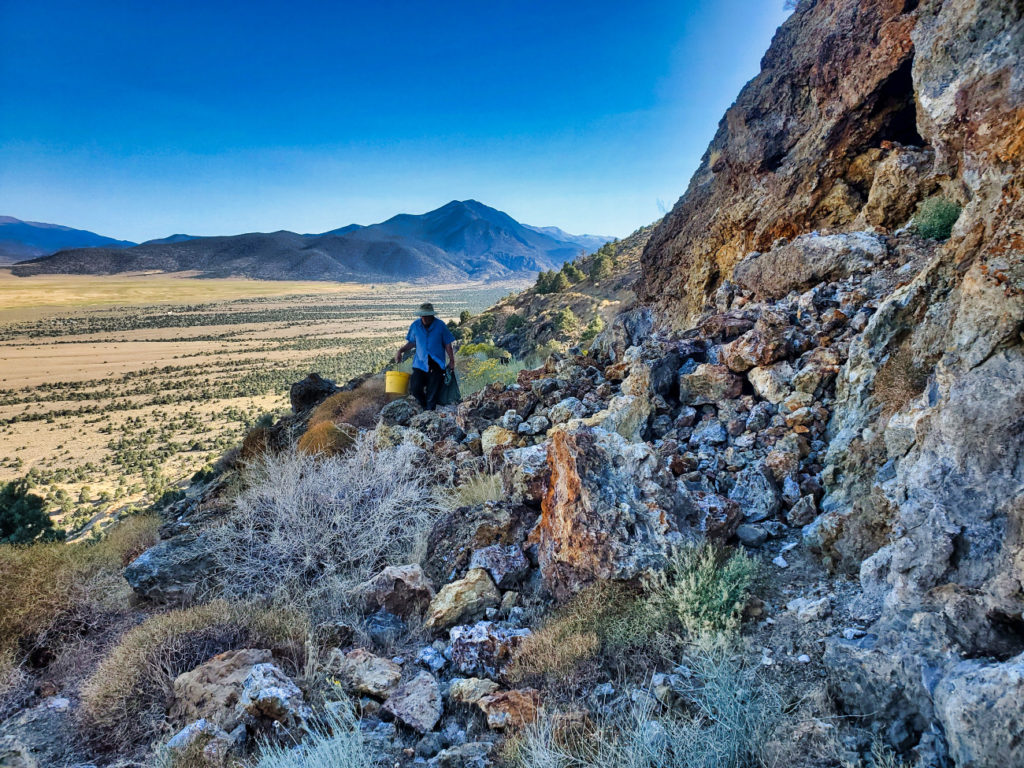
Some of the material from the dump seen above contained clear and gemmy yellow hexagonal prisms up to 0.5mm width and 1 mm length. The Raman analysis determined they are fluorapatite. This mineral is reported from the mine for the first time.
A few vugs had sparkly yellow balls perched on clear fluorite. I thought it was previously reported corkite, but this time it turned out to be jarosite. Not too exciting, as it a very common mineral, but it was not reported from the mine before.
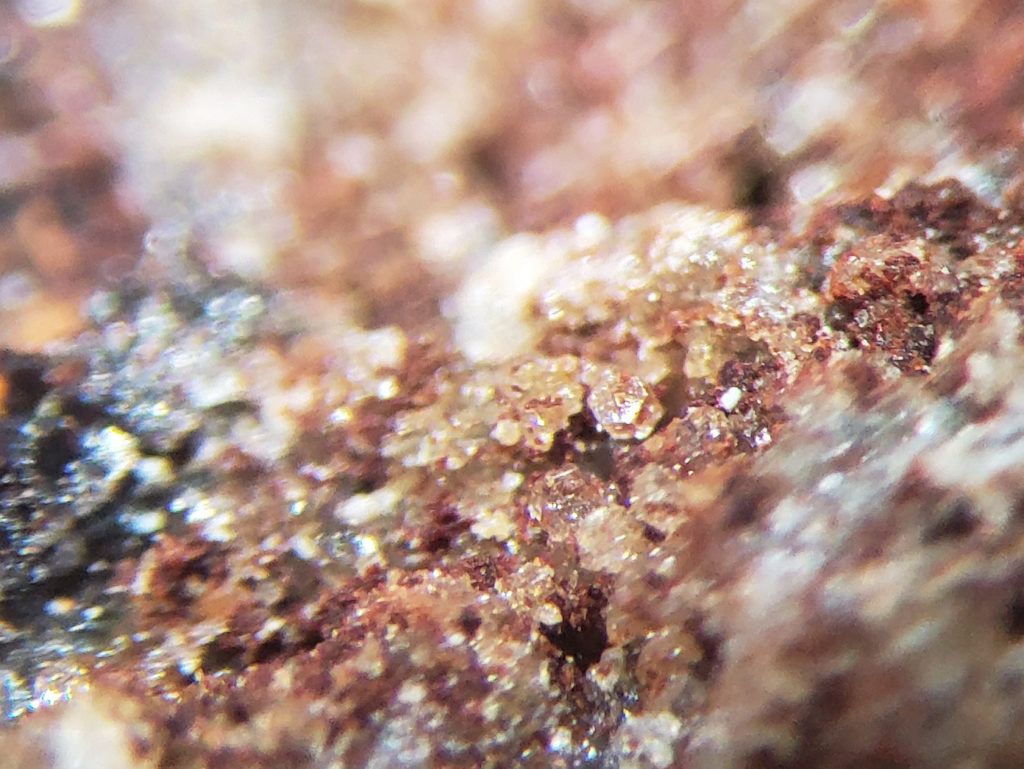

Some of the pink and clear fluorite cubes were available as freebies at the October MSSC meeting.

Some participants reported finding nice fossils in the Wilson Canyon area after the fieldtrip. I headed north and northwest towards Utah and encountered a lot of snow in Northern Nevada, brought by the cold front that just missed us on Saturday.
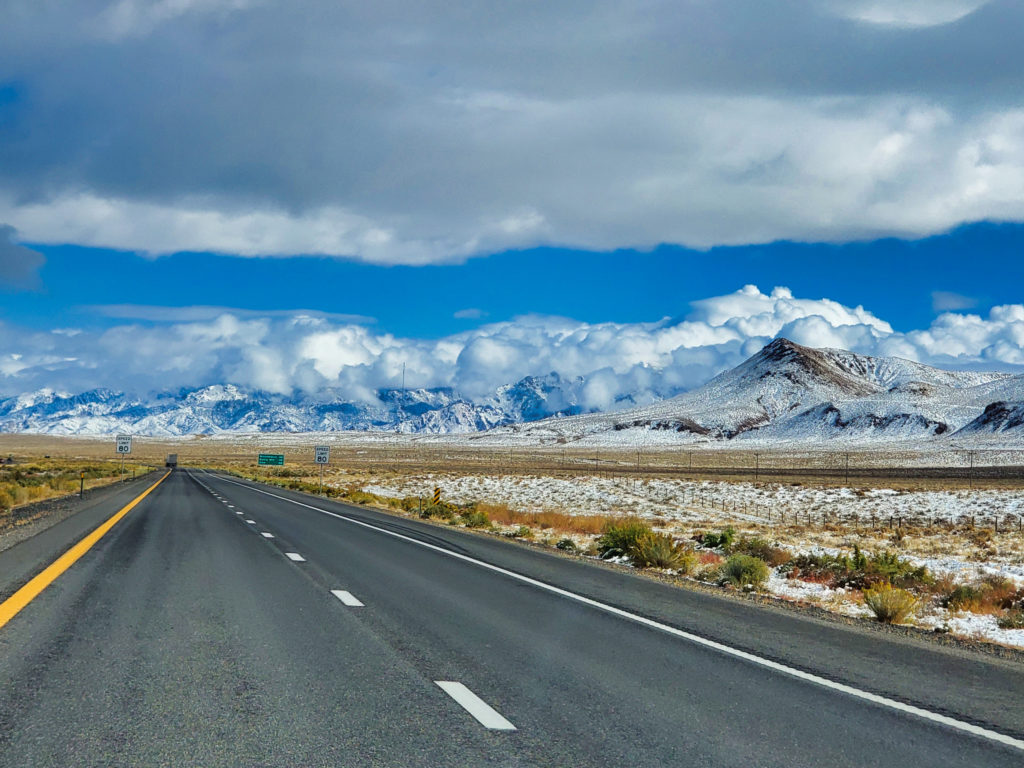
Closer to the Utah border I got into a big snowstorm and started reminiscing how great the fieldtrip weather was compared to that ;-).
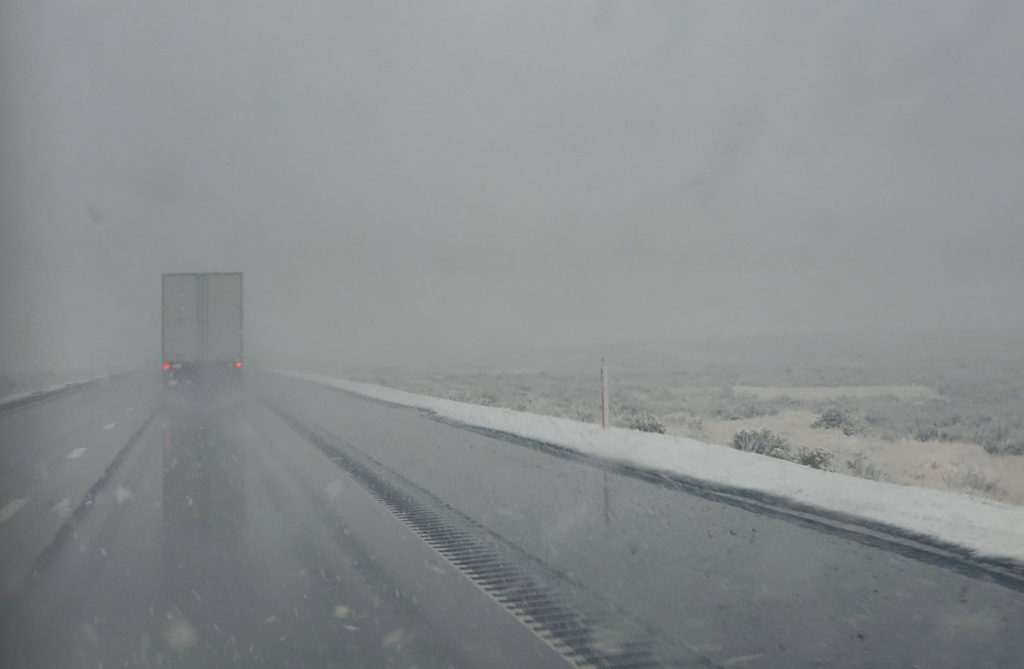
Big thanks to everybody who participated and see you next time!
MarekC